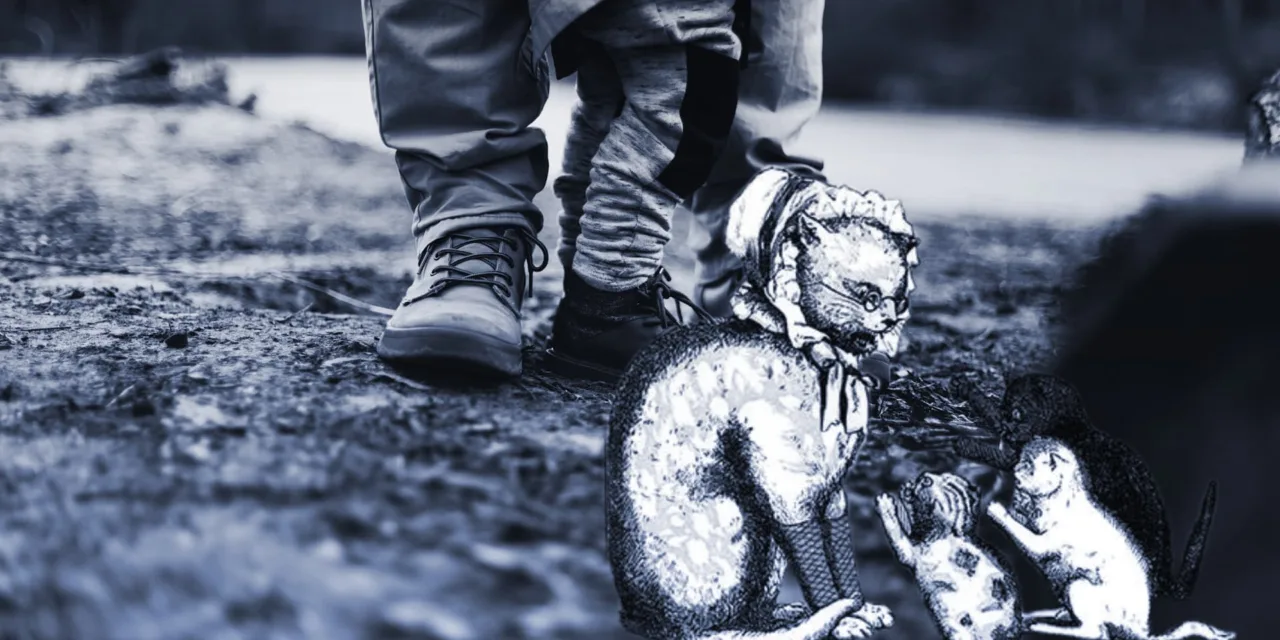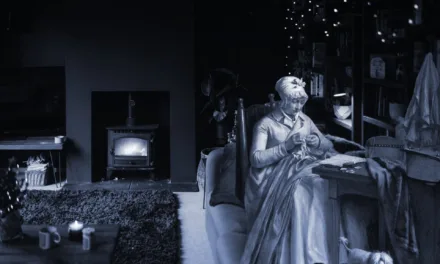
How do you write a realistic caregiver?

“Hello! I’m writing a group of characters and currently planning their dynamics with each other; I have one older character 40-50 yrs (A) one teen character (B) and one younger character 5-7 yrs (C)
A is a mother-figure to B and is essentially their adopted mother. To keep it interesting, I want to differentiate that relationship with the one she has with B, making it more of a ‘caregiver’ relationship, but I’m unsure as to how to portray this. I don’t want her to come across as ‘cold’ or ‘distant’ to B (especially since they are younger). But I still want the difference to be notable. Do you have any tips/advice as to how to go about this? For added information, there are 3 other group members, all young adults 22-29 yrs”
There are an almost infinite number of different family dynamics in fiction, so it can be a balancing act to try and portray them as varied and interesting in a way that feels realistic to who you intend the characters to be. How do we show different types of nurturing bonds without making any feel less meaningful than others? It’s definitely something a lot of us have had to think about in our own writing.
Think about the various caregivers in your life. Maybe you had a particularly influential teacher, a loving aunt, or a family friend who looked out for you growing up. Each of these relationships probably felt distinct from your relationship with your parents, yet they were all valuable and caring in their own way. This is the kind of nuance we want to capture.
Understanding different types of care
Caregiving relationships come in many forms, from parental figures to professional caregivers, extended family members, or trusted guardians. Each type has its own unique dynamic that shapes how people interact and bond with each other.
A parent-child relationship, whether biological or adoptive, often involves:
- Deep emotional investment in the child’s future.
- A desire to shape values and character.
- Strong protective instincts.
- Unconditional love and acceptance.
- Long-term commitment to the child’s development.
A caregiver relationship, while still nurturing, might focus more on:
- Meeting immediate needs with warmth and consistency.
- Professional boundaries while maintaining genuine care.
- Structured routines and clear expectations.
- Supporting independence appropriate to age/ability.
- Present-focused rather than future-focused care.
Neither of these are binaries, and different relationships may blend elements of each depending on circumstance and trust. But hopefully the above will at least provide a basis from which you can pick, choose, build, or grow the unique relationships that your characters share.

Write more, write better, and achieve your goals with Novlr!
Writing different care dynamics
One of the most challenging aspects of writing caregiving relationships is showing how they differ, all while trying to give them equal emotional weight. Each relationship has its own rhythm, boundaries, and ways of expressing care. Understanding these subtle differences can help create distinct dynamics that feel natural and meaningful.
To show distinct caregiving relationships, you can try these techniques:
Physical interactions
- A character acting as a parental figure might hug spontaneously or show physical affection often.
- In their caregiver role, they might be more intentional about physical contact, like offering high fives, more verbal encouragement, or sitting together during activities. Just as emotionally available, but less physically unbounded.
- They might change their physical affection style to suit the character to whom they are expressing that affection. For instance, one child might be open to physical affection, while the other prefers not to be touched.
Communication styles
- Parents often use unique terms of endearment or family-specific language.
- Caregivers might use the child’s name more frequently and maintain friendly but clear communication.
- Nicknames are unique to the individual, so the caregiver may adapt their shared language based on the history they share with each child.
- When dealing with one or more children, they will endeavour to be open and inclusive to both parties in the way they speak.
Emotional support
- A parent figure might be more open to asking probing personal questions.
- A caregiver might acknowledge feelings and be open to discussion, but less likely to push to get information.
- Support should be unique to the needs of the child, although a parent may be more likely to attempt to actively mould a child’s emotional responses than someone in a caregiver role who might simply nudge or guide.
Decision-making
- Parents might more willingly involve themselves in a child’s major life decisions.
- Caregivers might be more likely to steer a child in a desired direction rather than actively inserting themselves.
Creating warmth
The key to writing a warm caregiving relationship that’s distinct from parenting is to focus on:
- Showing a genuine interest in the child’s daily experiences.
- Providing a consistent, reliable presence.
- Drawing clear boundaries in both relationships, but delivered with kindness.
- Showing dedication to the child expressed through personal attention.
- Including all children in activities, decisions, and affection appropriate to the nature of their relationship.
- Tailoring emotional responses, guidance styles, and physical affection to the needs of the individual child and their contextual relationship.
Creating authentic care relationships
The most interesting caregiving relationships in fiction mirror what we see in real life. They’re complex, nuanced, and constantly developing. Whether writing a bond between a parent and a child or a guardian and their ward, authenticity comes from understanding that different doesn’t mean lesser. Each relationship has its own special value and impact on a child’s life.
What makes these relationships feel real is how they adapt and grow over time. A caregiver might start with clear professional boundaries that soften as trust develops. A parental relationship might begin with intense protective instincts that gradually give way to supporting independence. The key is showing this evolution while maintaining the distinct qualities that make each relationship special.
































